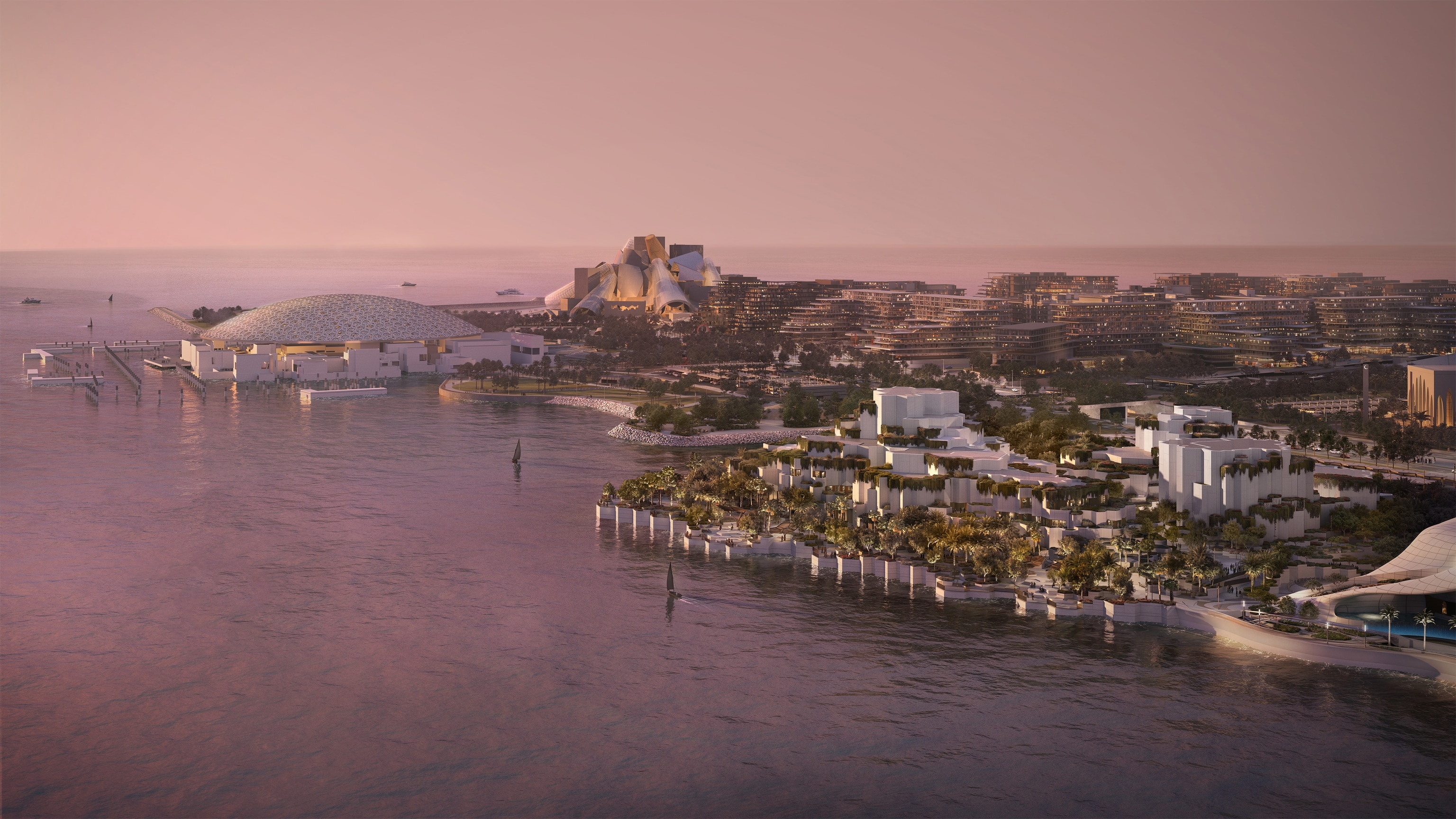
Seeing differently: Five objects inspiring curiosity and creativity
We naturally view the world through our own cultural lens: The Saadiyat Cultural District, Abu Dhabi inspires visitors to discover and see things differently.
At first glance you might see a rock, a bone, a book, steel cups, and a dagger. But the artefacts on display in the museums and galleries of the Saadiyat Cultural District in Abu Dhabi are consciously both objective and subjective: They are what they are, but we will all interpret them through our own unique lens that is shaped by our background and life experiences. This is a concept actively embraced by the Saadiyat Cultural District.
Offering a profound concentration of cultural experiences, the district is home to Louvre Abu Dhabi, Berklee Abu Dhabi and Manarat Al Saadiyat, and the future home of Zayed National Museum, Guggenheim Abu Dhabi, Natural History Museum Abu Dhabi, and teamLab Phenomena Abu Dhabi. While celebrating the stories of the United Arab Emirates, the Saadiyat Cultural District consciously represents a global diversity with a mission to inspire curiosity and creativity in its widest, most inclusive sense. Drawn from across the world, many of the objects on display have a meaning beyond their immediate appearance—they inspire curiosity and creativity on a pancultural level.
The Murchison Meteorite: Unlocking the Secrets of our Solar System
In the small Australian outback settlement of Murchison, a puff of blue smoke, a series of loud bangs, and the strong smell of methylated spirits heralded the arrival of what came to be known as the Murchison meteorite. One of its fragments is part of the collection at the Natural History Museum Abu Dhabi and, although not immediately eye-catching, the brown-black rock is a key to unlocking the secrets of the solar system.
The meteorite was originally part of a large asteroid, a leftover from the birth of our solar system over 4.5 billion years ago. Inside were discovered extraterrestrial amino acids, the building blocks of proteins, along with water, and sugars. It also contains pre-solar grains, known as stardust, formed during the explosion of stars 7 billion years ago—the oldest material ever dated on Earth. There are few questions bigger than how the solar system was formed, and few objects on Earth hold more of the answers than the Murchison meteorite.
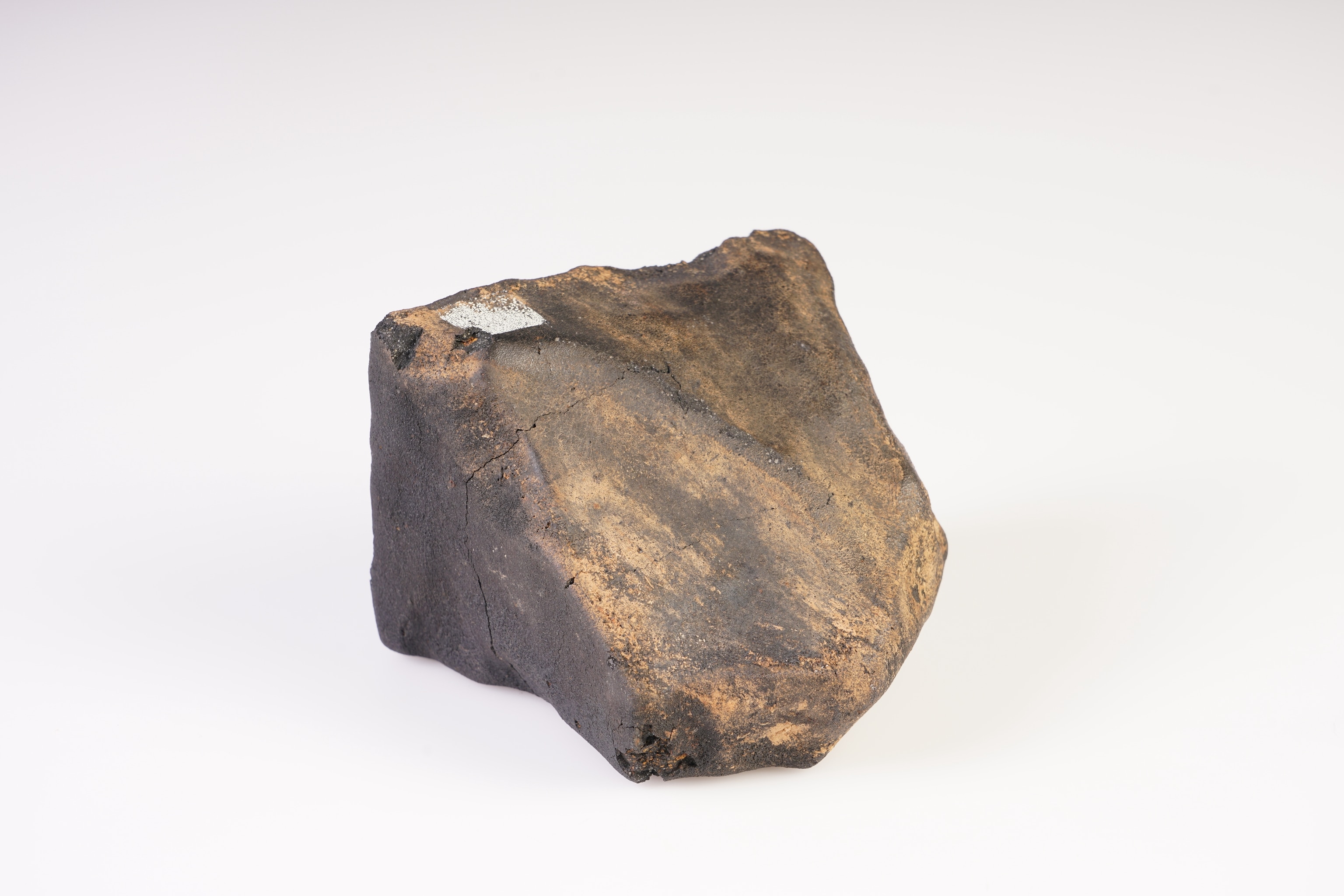
The White Hadrosaur Jaw: Understanding the World of the Dinosaurs
The end of the Cretaceous Period, 66 million years ago, marked the last breath of the age of the dinosaurs. Its strangely familiar landscape was populated by birds and mammals alongside the tyrannosaurus rex, triceratops, and 40-foot long edmontosaurus. This plant-eating hadrosaur was a relatively common sight across large areas of the planet, and the white hadrosaur jaw soon to go on display in the Natural History Museum Abu Dhabi, offers clues to this dinosaur’s success.
Edmontosaurus jaws contained hundreds of teeth with distinctive, flattened ‘cutting’ surfaces that were continuously being replaced. This helped it grind fibrous plants to pulp, making them easier to digest, so it could process huge quantities of vegetation. While hadrosaur fossils have not yet been found in Arabia, fossilized footprints of similar dinosaurs have been discovered. Such finds are inspiring a new wave of Arabian paleontology, including the study of fossils in the museum’s research labs as it searches for clues to our prehistoric past.
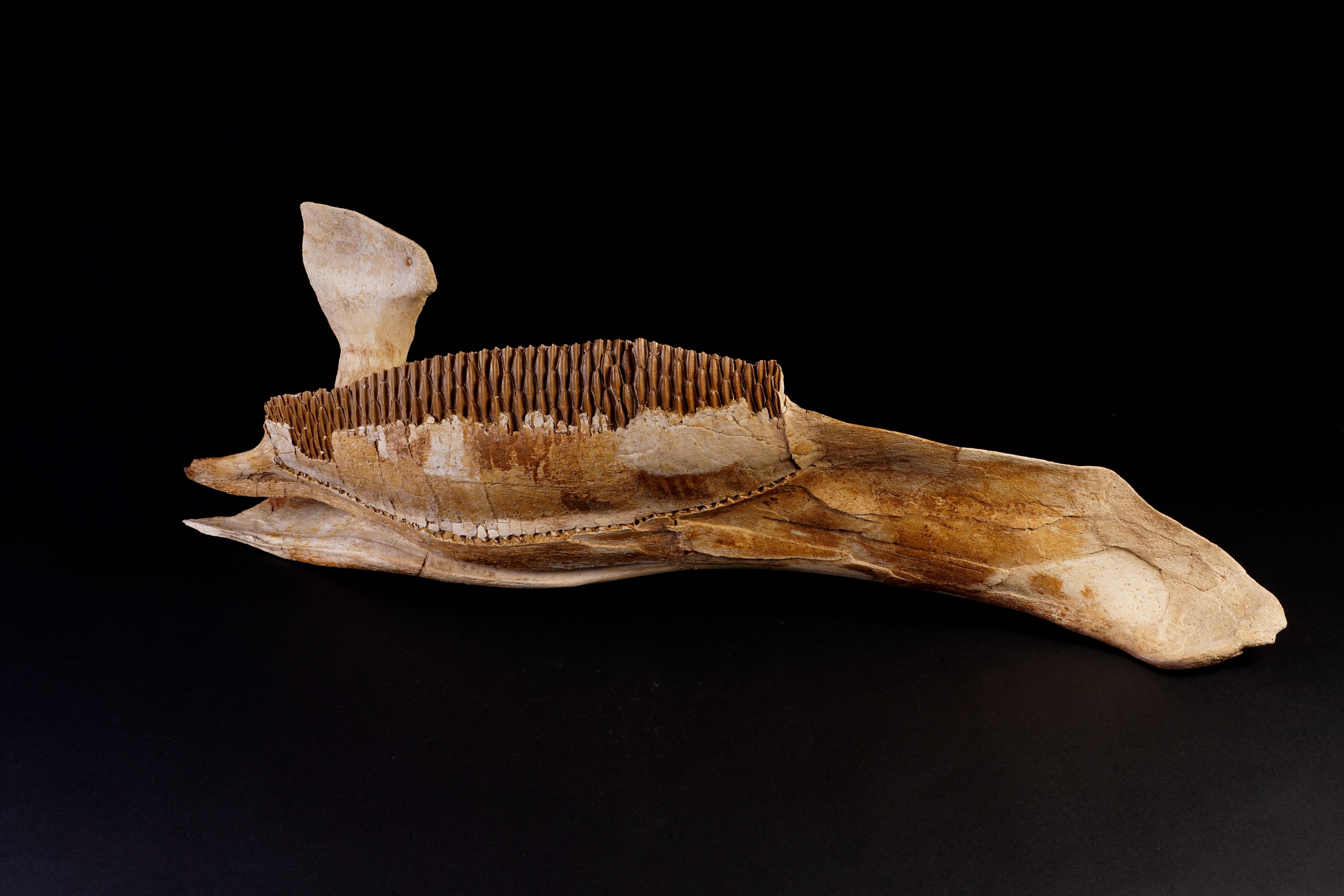
The Khanjar: A Symbol of Leadership
A dagger can be many things: A tool for cutting, a weapon for hunting, an ornament for decoration. And in the culture of Arabia, it has taken on a deeper, figurative meaning. The khanjar is more than a dagger, it is a traditional symbol of leadership. And as such, it has inspired creativity in its design and deployment, with beautiful decorations and prominent placement used to highlight and enhance its symbolic power—and that of its bearer.
The replica khanjar of UAE’s founding father, the late Sheikh Zayed bin Sultan Al Nahyan, part of the collection of Zayed National Museum, is an impressive example of this. The elegantly curved blade with its ornately engraved hilt is carried in a black sheath intricately decorated with silver thread and geometric patterns—it looks impressive. Understanding that leadership is as much about wisdom as about authority, Sheikh Zayed was often pictured prominently wearing the khanjar, reflecting the dagger’s age-old association with wisdom and peace in the lands that he unified into the United Arab Emirates.

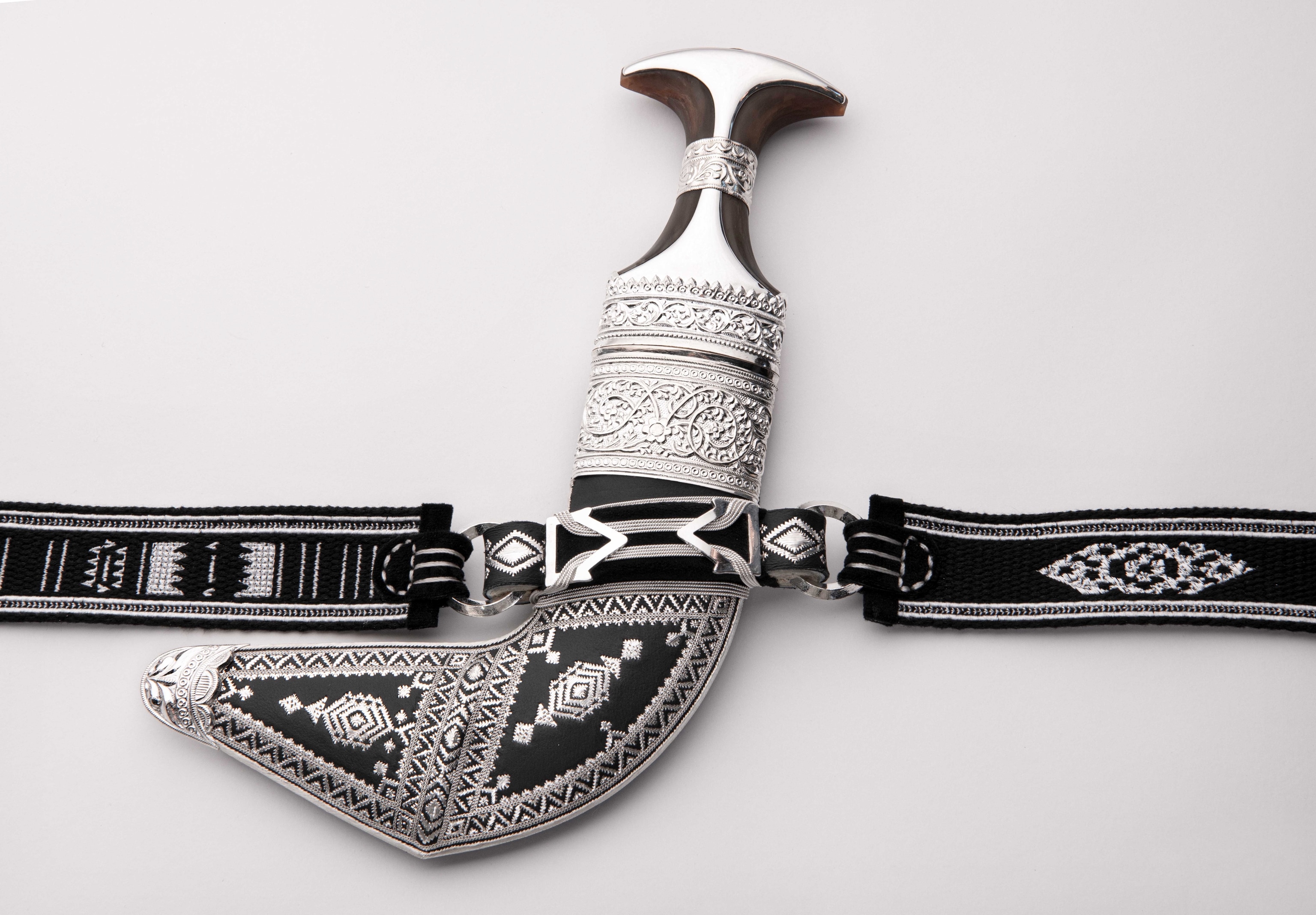
Section of the Holy Quran: The Art of Communication
The section of the Holy Quran on display in the Louvre Abu Dhabi is mesmerizing. You can almost feel the weight of time it took to so carefully craft the words and images on the page: The design and execution is beautifully perfect. It is, in itself, a work of art, and one that was inspired by the desire to spread the word of Islam around the world—the Quran represents one of the most creative forms of written communication ever developed.
Possibly made in Cairo or Damascus at the start of the 14th century, its text is written using muhaqqaq, a highly developed form of calligraphy popular at the time. The Quran was originally written in Arabic, a language whose letters lend themselves to artistic expression, inspiring the evolution of calligraphic styles including muhaqqaq. This was more than an aesthetic embellishment; calligraphic text provided an authoritative and well-defined way of writing that made reading easier—muhaqqaq literally means ‘clear’. As Islam spread, calligraphy spread with it—instantly recognizable, it continues to inspire creativity today.
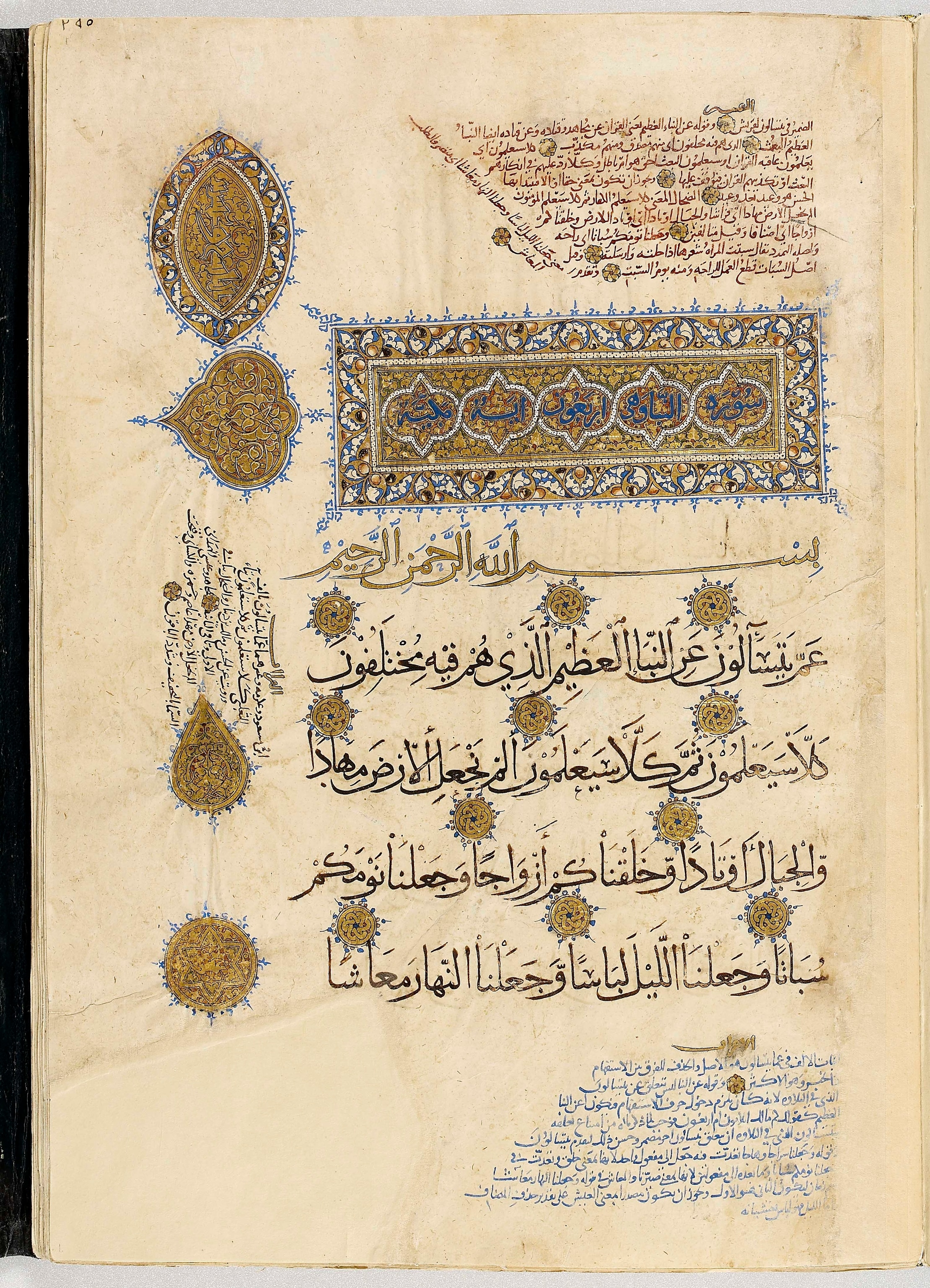
Stainless Steel Cups and Copper Wires: Subjective Objects
Hassan Sharif is a world-renowned conceptual artist, and the purpose of his three-dimensional creations is to emphasize their physical and material reality, to make the viewer look and draw their own conclusions. As such, his works on display at the Guggenheim Abu Dhabi arguably epitomize the spirit of the Saadiyat Cultural District.
The assemblage, part of a series consciously given the impassive title of ‘Objects’, is a subtle commentary on mass production and consumerism. There is a familiar universality to the objects Sharif incorporates, in this case steel cups and copper wire, that enables almost anyone to recognize them and then connect with them in their own way: Devoid of symbolism and functionality we can’t help but see them differently. Such an approach inspires creativity among artists and curiosity among everyone, as we search for meaning in the seemingly banal.
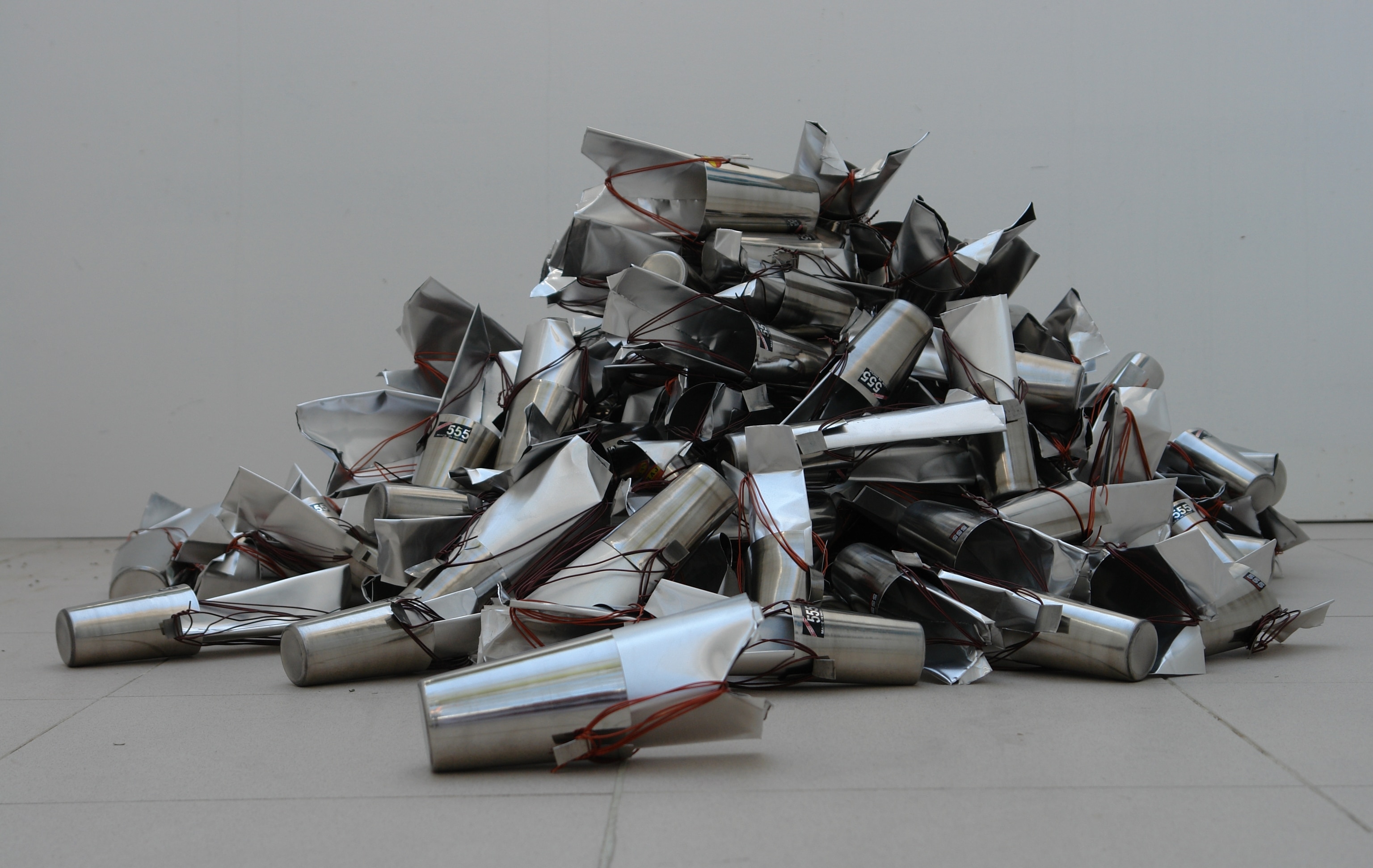
At the heart of the Saadiyat Cultural District are museums and galleries that celebrate global diversity—the myriad ways we can interpret the same thing and how that can help us reframe our view of the world. Because an object is often more than it appears: A key to the secrets of the stars; a clue to the lives of dinosaurs; a creative way to communicate; a weapon that symbolizes peace; and a provocation to see things differently.